For the third time in two years, Dallas County voters will get a chance to approve construction of a new county jail in a special election Tuesday, Aug. 4.
This time, however, circumstances make the issue more urgent, county officials say. A waiver issued by the Iowa Department of Corrections is set to expire, which will reduce the jail’s capacity from 36 to 24 beds, and Polk County just doubled the rent it charges to house Dallas County’s overflow prisoners, raising the daily rate from $50 per inmate to $95.
“Anyone who thinks we don’t need a new jail,” said Dallas County Supervisor Kim Chapman, “needs to take a tour of the jail and see what they’re working with over there.”
“Or get arrested,” added Supervisor Mark Hanson.
Never in their history have the people of Dallas County voted to pay for a new jail, and since 2013 they have twice rejected similar proposals for selling general obligation bonds in order to finance new facilities.
Yet the Dallas County Supervisors persist in seeking voter approval because the county’s rapid population growth only intensifies the chronic shortage of jail space, according to the supervisors.
“What are we going to do when we lose our beds at the jail?” said Brad Golightly, chairperson of the Dallas County Board of Supervisors. “We’re just getting closer to having to make knee-jerk reactions where now we’re trying to make a plan and navigate through all these things in the most cost-efficient way we can, and that’s what we’ve tried to seek out: how do we do what we need to do and afford it?”
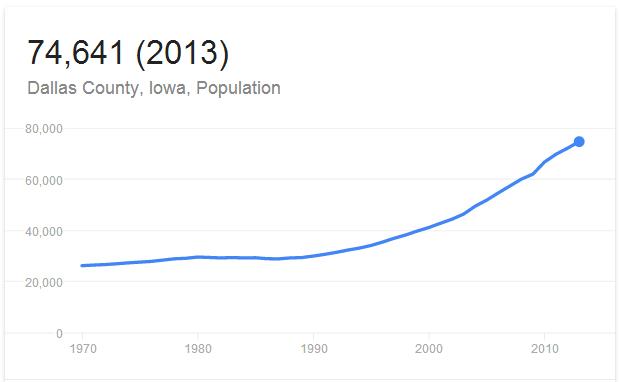
The population of Dallas County, now about 80,000, has basically tripled is the past 25 years. Data released in March by the U.S. Census Bureau showed the population grew by another 17 percent since 2010, making Dallas again the fastest-growing county in Iowa.
Population projections show the number will double again in the next 25 years, rising to almost 160,000 people by 2040.
The math is easy. More people means more demand for county services, and more services means more counties employees to perform them, including public safety employees. But the county has long since run out of room to house its own workforce and has been leasing buildings in downtown Adel in order to perform its basic functions.
Golightly recalled talking to voters after the second referendum failed in November 2014.
“There are some folks that are probably going to vote ‘No’ no matter what,” Golightly said. “Among those people that I did have a chance to visit with afterwards, they kind of raised their eyebrows after they had a better understanding and said, ‘Well, maybe that’s not so bad.’ I think a lot of people weren’t paying attention and didn’t understand, and my job is to help them understand what we’re trying to get done.”
Chapman also said making voters aware of the current conditions is crucial to the county’s progress as a responsible government entity.
“I believe this issue should go back to the voters,” Chapman said. “We must educate the voters about the critical importance of this issue. There’s nothing new to the argument this time around. It just continues to become a more significant problem because of the growth of the (sheriff’s) department. The county continues to grow. The service demands continue to expand, and they don’t have sufficient space to carry out the duties and responsibilities they have. What I would say to the public is to contact the sheriff’s department and go in for a tour. See what their conditions are in that facility, and I’m sure they’ll walk away saying, without any doubt, that there is a need for a new public safety complex.”
“I think a lot of people weren’t paying attention and didn’t understand, and my job is to help them understand what we’re trying to get done.” –Supervisor Brad Golightly
Dallas County voters roundly rejected a $16.85 million bond referendum in August 2013 that would have combined a new jail and public-safety facility with new county administrative offices into a one-stop county complex in the Ortonville area east of Adel.
The 2014 general election was closer, but voters again said, “No,” that time to a $23.6 million plan that would have split the projects — with the approval of the Adel Mayor and City Council — putting the jail again in Ortonville but the new county offices on U.S. Highway 6 just west of the river.
This summer voters will decide only on a plan for a stand-alone jail and sheriff’s office in Ortonville. The need for more room for the other county departments has not gone away in the meantime, but the $3 million repurposing of the former Dallas County Care Facility has bought the county some breathing room, but not much, according to Golightly.
“These space needs haven’t changed even with the addition of the old care facility,” he said.
The chronic need for more room often dominates or is in the background of most deliberations by the supervisors, such as their approval last March of the 2016 fiscal year budget. At the hearing, Golightly outlined “future challenges” for the county, and as usual these challenges included space needs in the civil section of the sheriff’s office, space needs in the E-911 and sheriff’s dispatch center and space needs in the county jail.
But there were also pressing space needs noted in the driver’s license section, in the county attorney’s office, the auditor’s office, the IT department and so on down the line.
The need for another courtroom is also on the near horizon. As Golightly explained, once Dallas County reaches an official population of 80,000, a state law will kick in requiring the Fifth Judicial District to provide an additional district judge. And a new judge will need an additional courtroom in Adel.
“We have administrative-space needs impending, along with the court situation breathing down our necks,” Golightly said. “I’d hate to see us drop the ball on this and not offer a solution to all these administrative-space needs.”
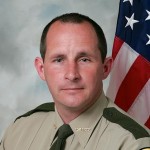
Doing more with less
But the question this summer is only about a new jail and law enforcement center. No one knows better than Dallas County Sheriff Chad Leonard the urgency of his department’s need for new facilities.
“The problem is really two-fold,” Leonard said. “You have the jail side of things, which is probably the county’s number one liability, taking care of prisoners. And the administration side of the sheriff’s office is your second problem. We have about 75 staff members, whether full-time, part-time or reserve employees, who work out of this building, and there’s just not a whole lot of room to work on the administration side.”
Room or not, the workload has grown with the population, as the numbers show. The sheriff’s office conducted 180 court-ordered transports in 2011. By 2014 the number jumped to 633, an increase of 250 percent. The number of arrest warrants served by the department jumped more than 150 percent during the same period, from 230 in 2011 to 594 in 2014. Service of civil papers similarly rose from 1,523 in 2011 to 2,894 in 2014, a 90 percent increase.
On the jail side, the costs mount as the population of Dallas County grows. Licensed for 24 beds and operating under a state-issued variance for 36, the county jail also has room on the floor to bed another dozen but only for 24 hours. Since the average daily population typically exceeds the jail’s capacity, overflow inmates are housed in other county jails, most often in Polk County but sometimes elsewhere.
“We’ve been paying $50 a day when we farm them out,” Leonard said. “Well, Polk County just called, and they upped our rates to $95 a day.” He said Dallas County pays Polk County on average about $40,000 every three months to house overflow prisoners.
“It’s amazing to me that they can function at all, really.” –Supervisor Kim Chapman
“It’s pretty hard to keep running from jail to jail to jail to pick up people for court,” Leonard said, adding that “Polk County’s been wonderful to work with. They’ve done a phenomenal job. One of the things that always sits in my mind is the fact that I’m liable for that inmate since it’s my prisoner sitting in Polk County Jail. If something happens to that inmate while in Polk County, I’m still liable for that inmate. So that’s an added weight on my shoulders. It’s one of those headaches you don’t want to have. You just want to make things efficient so you can do the job.”
Along with the $40,000-per-quarter cost of housing its overflow inmates in the Polk County Jail, Dallas County also spends tens of thousands of dollars for vehicles, fuel, personnel and insurance each year to transport inmates back and forth from the Polk County Jail.
“That $40,000 doesn’t take into consideration the financial obligation in wages, in fuel, in wear and tear on the vehicles. None of that is being considered in that $40,000,” said Chapman. “That’s just rent we’re paying Polk County. The point is the public is already paying for an expansion project, and they don’t even understand that they’re paying for it now because instead of it being located in Dallas County, we’re paying Polk County to use their facility. You’re paying for it now.”
The sheriff’s is not the only overcrowded county department, but two studies of the county’s space needs, from 2006 and 2013, identified jail space as a particularly critical need. At about 25,000 square feet, the present county jail and sheriff’s administration offices have less than half the room needed to discharge their state-mandated functions, according to the studies.
“The sheriff has moved his office two or three times in that building,” Chapman said, “so that he’s down to a cubbyhole to work out of. I don’t remember how many deputies, how many staff that department had when that building was built, but it has expanded so much in that period of time that it’s amazing to me that they can function at all, really.”
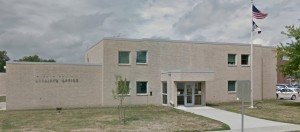 The present county jail was built in 1988. According to Dallas County Chief Deputy Sheriff Doug Lande, 20-year veteran of the sheriff’s office, discussions about the jail’s inadequate size had already started by 2000, during the administration of former Dallas County Sheriff Arthur L. Johnson.
The present county jail was built in 1988. According to Dallas County Chief Deputy Sheriff Doug Lande, 20-year veteran of the sheriff’s office, discussions about the jail’s inadequate size had already started by 2000, during the administration of former Dallas County Sheriff Arthur L. Johnson.
“There’s been a lot of changes,” said Lande, who is also the chief jail administrator. “The county wasn’t hitting population records then like it is now. Clive, Urbandale and West Des Moines were just gravel roads back then, and it was easy to keep up with the subdivisions. There’s so many going up now that it’s hard for patrolmen just to keep up with the names of all the new streets.”
The Iowa Department of Corrections annually inspects the county jails of the state. The state jail inspector’s comments about the Dallas County jail are blunt and described by Chapman as “somewhat scathing.”
According to the jail inspector’s 2013 report, “The Dallas County Jail is an older facility that does not meet the current needs of the prisoners, staff or public.” The 2014 report noted the need for necessary maintenance but admitted “this is difficult if not nearly impossible to complete due to the age and condition of the jail facility.”
“It’s not just the county saying this is needed,” Chapman said. “We have to get the message out about what the cost is to the taxpayer if we fail with the bond issue again.”
“Reason not the need”
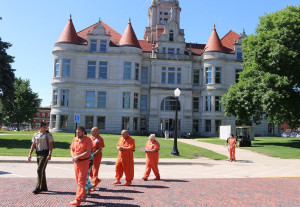
Another very real but not easily quantifiable cost of a failed referendum is to the inmates of the Dallas County Jail themselves. Some voters see the architect’s rendering of the new law enforcement center and seem to suppose the county is building its prisoners a country club or luxury hotel.
Darci Alt, director of the Dallas County Mental Health Department and former Central Point of Coordination administrator, wants to correct that voter misunderstanding.
“That’s the very issue that you hear people griping about,” Alt said. “‘Oh, those inmates don’t need a great facility. They’re criminals, blah, blah, blah.’ But it’s more about the fact that you have to meet standards, that you have to be up to code, that you’re inspected. There’s a lot that you have to meet.”
Alt and Lande work more closely with the county’s jail population than anyone else. They describe substance-abuse services and Alcoholics Anonymous meetings getting squeezed out for lack of space. They have seen religious programs disrupted and mental health services suffer confidentiality breaches for lack of space.
“About 30 percent get (mental health) services from us on an ongoing basis,” Alt said, “and probably 55 percent have at least been evaluated by us. We’ll have our own space (in a new facility) to do our thing, and that will be awesome, because we bring therapists in, we bring providers in, and they meet with folks, and we’re going to set up some substance abuse services.”
Alt and Lande, who sometimes finish one another’s sentences, also see the virtues in a roomier jail and a centralized law enforcement center.
“I’d tell the voter to trust the sheriff’s office and what they’ve been hearing,” Lande said. “The problem does not just go away. As that can has got kicked down the road the last 12 or 14 years, it’s not going away.”
“As the population of Dallas County grows,” Alt said, “the need is going to continue to grow. We pay for it one way or another. We’ve found better ways to serve the folks that we have in jail. We’re seeing better outcomes by the way that we serve the folks in jail. These guys do an excellent job. (Doug) does an excellent job in the way that he works with the individuals, so the need’s not decreasing but the times are changing. It’s time that we work on that new jail.”
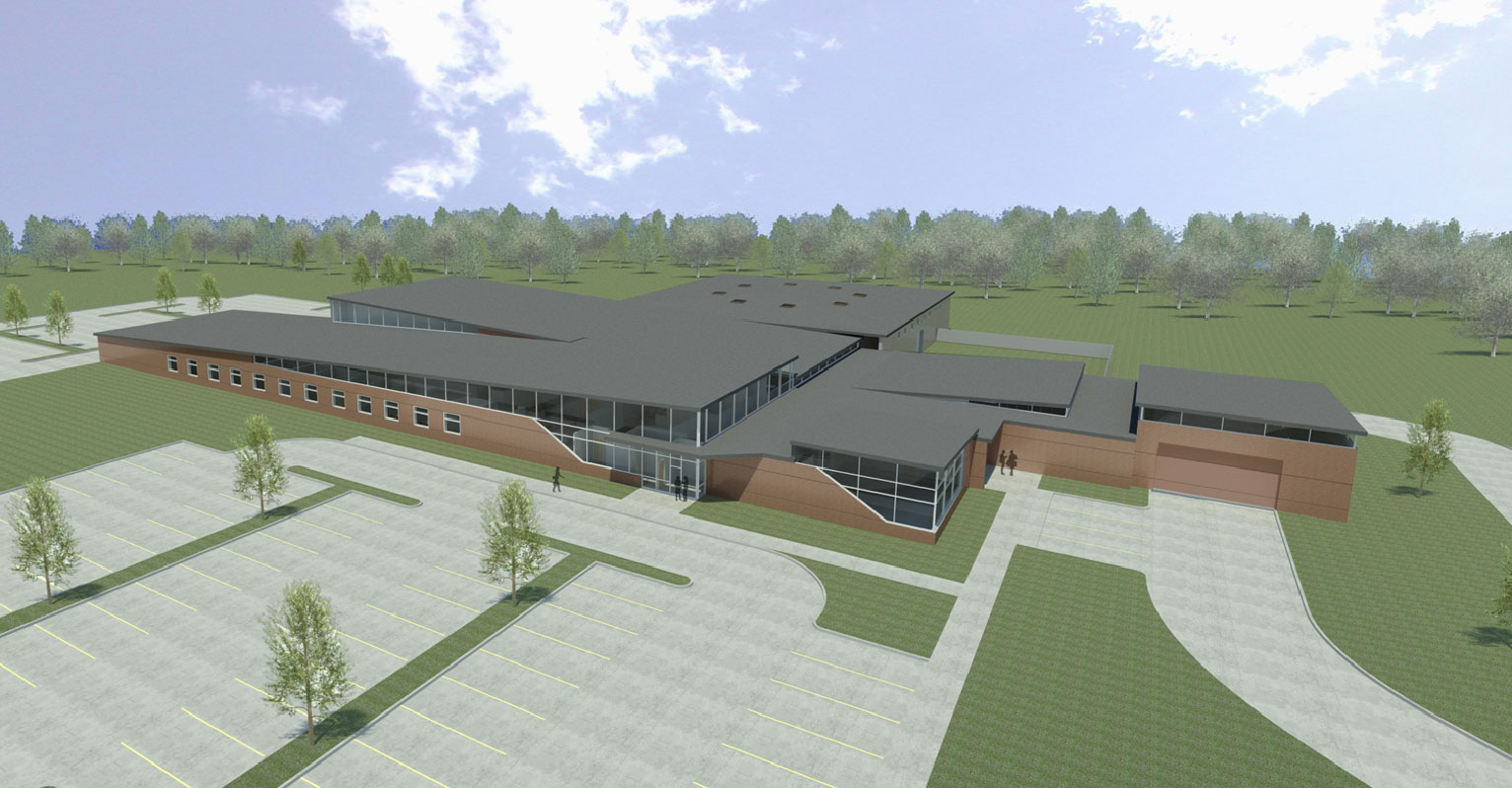
A simple question
Dallas County voters will face the following language as Proposition A on Tuesday, Aug. 4:
“Shall the County of Dallas, State of Iowa, issue its General Obligation Bonds in an amount not exceeding the amount of $16,800,000 for the purpose of designing, constructing, erecting, equipping and furnishing a new Sheriff’s Office-Law Enforcement Center, with related site improvements?”
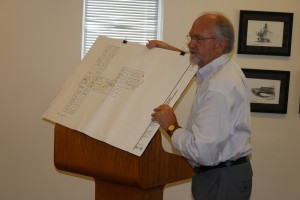
The county has provided the following highlights of the proposed new sheriff’s office and law enforcement center in order to inform voters:
The Ortonville site is located on the eastern edge of the City of Adel, within the city limits. It is owned by the County and contains the sewer lagoons on the north side of the bike trail in an area serving light industrial manufacturing.
The site is relatively flat for ease of construction and contains utilities at the southeast corner.
The location permits ease of access to all parts of the county in times of emergency. Highway 6 is an east/west four-lane State highway. R 16 is within a half mile for access in the north/south direction. Highway 69 is two miles west for north/south access to the balance of the county.
A Dallas County Sheriff’s Office—Law Enforcement Center could spur economic development in this area.
The $16.8 million project would take about two years to build and would house the Sheriff’s Civil Division, Patrol Division, Jailer Operations, Jail and Emergency Management Services (EMS). It would have an overall footprint of 62,000 square feet, including 19,000 square feet for housing pods, 17,000 square feet for jail administration and support, 5,000 square feet for sheriff administration and 7,000 square feet for patrol and investigation.
The new jail would be licensed for more than 90 beds but could be supervised without increasing the size of the current jail staff. This represents an increase from the present bed count (with waiver) of 48 to a bed count of 90.
The building would be clad with traditional red brick manufactured from either of the Dallas County brick plants. Glazing will be provided at the appropriate locations for natural daylight and masonry panels will block out unwanted daylight where designated and provide the level of security required for a jail facility.
The EMS division would be enhanced to provide increased public safety. State-of-the-art dispatch services would be incorporated into the facility, offering a command center for public emergencies. The present dispatch center is housed in the basement of 902 Court St., a block away from the sheriff’s office.
“Read my lips.”
A common objection to Proposition A is the rise in property taxes it will cause. If passed, the jail bonds would cause annual property taxes to increase $12.61 per $100,000 of valuation. The 2016 combined levy rate in Dallas County –both rural and countywide levies–is 7.81 for each $1,000 of taxable valuation.
In other words, a house in Dallas County with an assessed value of about $180,000 would have a taxable value, after the state residential-tax rollback is applied, of about $100,000 and an annual tax liability of about $781. That annual liability would increase to about $794 if the referendum passes.
According to records of the Dallas County Assessor, the total taxable value of property in Dallas County is about $4.4 billion. The county will collect about $150 million in local taxes in 2016 and pass along about $130 million of that sum to townships, school districts, cities and other taxing entities in Dallas County. The remainder funds all county services.
A variant of the no-new-taxes theme comes from Jeanette Myers Bodermann of Granger.
“I empathize that the County is in trouble with lack of space,” said Bodermann in a letter to the editor of ThePerryNews.com. “However, this is what you get when people vote Republican for all three Board of Supervisors, as well as the Sheriff, in every election since 2005: lack of vision, planning, and aversion to raising taxes over time for future growth and expansion. Now the citizens of Dallas County are thrust into crisis mode and need to cough up money immediately? Why should the citizens of Dallas County pay for a jail when our own governor won’t fund our children’s schools?”
Adel City Council member Shirley McAton opposed the first two referenda and now opposes the third. McAton was the business manager for the Adel-DeSoto School District for 22 years and is no novice in large-scale building projects. She offers a host of specific objections to the proposed plan for a law enforcement center.
She believes the supervisors, in their eagerness to get something built in order to make the Ortonville lagoons function properly, are mistaken in placing a jail in a prime economic development corridor on U.S. Highway 6. She also asks why the possibility has not been more thoroughly explored of building a new jail on county land near the new Human Services Campus, formerly known as the Dallas County Care Facility.
Perhaps her prime complaint, and this applies to all three referenda, aims at the supervisors’ lack of collaboration with the city of Adel and a certain highhandedness in their decisions.
“There are a whole raft of issues that the supervisors never have addressed and don’t want to because they have decided what they want to do,” McAton said. “We thought that two council people and a supervisor were going to work together and try to work through some of the issues and perhaps reach some agreement on a different site, but that never happened. We thought we would actually talk to each other. That didn’t happen. We have never talked to each other in that kind of situation. They do what they want to do, and we ask questions. Sometimes we get answers, and sometimes we don’t.”
McAton believes “there are other alternatives, but there was never any opportunity for input in that area because they didn’t want any. They wanted to build it out at Ortonville from the beginning.”
Though adamant, McAton admits her opinion is in the minority on the Adel City Council.
“It’s certainly not total agreement within the city council, of course, either,” she said. “There are a couple of us who oppose what (the supervisors) have done because it hasn’t been true collaboration, and we think there are some other options to moving everything out of downtown Adel, which has been the county seat for many, many years. In my opinion, county services belong around the courthouse and in the downtown area. Whether that can happen we don’t know because we’ve never collaborated. We just get whatever they want to give out.”
Election Day is Aug. 4
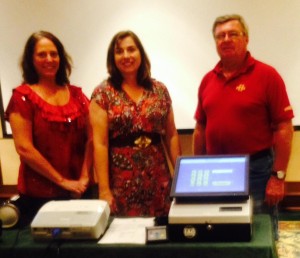
Nothing if not tenacious, the county supervisors approved the ballot language in May and got it to Dallas County Auditor Gene Krumm by the June 19 deadline. Krumm then prepared the ballot for the August special election.
Absentee voting on the measure began about one month ago.
Dallas County Elections Deputy Kim Owen issued a public statement informing county residents about details of the Aug. 4 election.
Details of Owen’s statement include:
The polls on Election Day, Tuesday, August 4, will open at 7 a.m. and close at 8 p.m.
In order to vote in the countywide special election, one must be a U.S. citizen at least 18 years old. Convicted felons and people currently judged by a court to be “incompetent to vote” are excluded from voting.
Friday, July 24 is the last day to register to vote in the August special election. The Dallas County Auditor’s Office will be open on July 24 from 8 a.m. to 5 p.m.
New voters can register after July 24 or on election day at the polling place for the precinct in which they currently reside. In order to register, a voter will be required to show proof both of identity and residency in Dallas County.
Identity can be proved with a valid Iowa driver’s license showing the voter’s current address. Other valid proofs of identity include a current photo ID that is valid and contains an expiration date, an out-of-state driver’s license, a non-driver identification card, a U.S. passport, a U.S. military ID card, an ID card issued by employer or an Iowa high school or college ID.
Residency in Dallas County can be proved with a hard copy (electronic copies are unacceptable) of any one of the following documents: property tax statement, utility bill, bank statement, paycheck or stub, government check or other government document.
Voters can pre-register at the Dallas County Auditor’s office, 910 Court St. in Adel, on any weekday between 8 a.m. and 4:30 p.m. Registration forms can also be found on the Dallas County website or at the Iowa Secretary of State website. Send completed forms to: Dallas County Auditor, 910 Court St., Adel, IA 50003.
Name, party and address changes for registered voters can be made at any time up to and including Election Day. Prior to Election Day, changes are made by the same means as voter registration. On Election Day, changes may be made at any of the 10 voting centers. If the voter has changed her address, she will need to register the new address at any of the 10 voting centers.
Absentee votes may be cast at the Dallas County Auditor’s Office from now until Aug. 3, the day prior to the election. The Dallas County Election office will be open daily for absentee voting from 8 a.m. to 4:30 p.m. Request forms for absentee ballots may be obtained at the Dallas County Auditor’s Office or on the Dallas County website.
All requests for ballots to be mailed must be received by 5 p.m. Friday, July 31. Completed absentee ballots must be postmarked by midnight the day prior to the election (Aug. 3) or delivered to the Dallas County Auditor’s Office before the polls close (8 p.m.) on Election Day.
Ten voting centers will be used for this election. This means Dallas County residents may
vote at any of the following locations:
- Redfield American Legion Hall, 1116 Thomas St. in Redfield
- Faith Lutheran Church, 602 S. 14th St. in Adel
- McCreary Community Building., 1800 Pattee St. in Perry
- Emmanuel United Methodist Church, 1910 Locust St. in Granger
- Dallas Center First Presbyterian Church, 1204 13th St. in Dallas Center
- Van Meter American Legion Hall, 910 Main St. in Van Meter
- St. Boniface Church, 1200 Warrior Lane in Waukee
- Point of Grace Church, 305 N.E. Dartmoor Drive in Waukee
- Heartland Presbyterian Church, 14300 Hickman Road in Clive
- St. Francis of Assisi Church, 7075 Ashworth Road in West Des Moines
For more information about the 2015 county-wide special election, call the Dallas County Auditor’s office at 515-993-6914 or at www.co.dallas.ia.us/government/auditor/elections .
ThePerryNews.com video by Mark Summerson

















